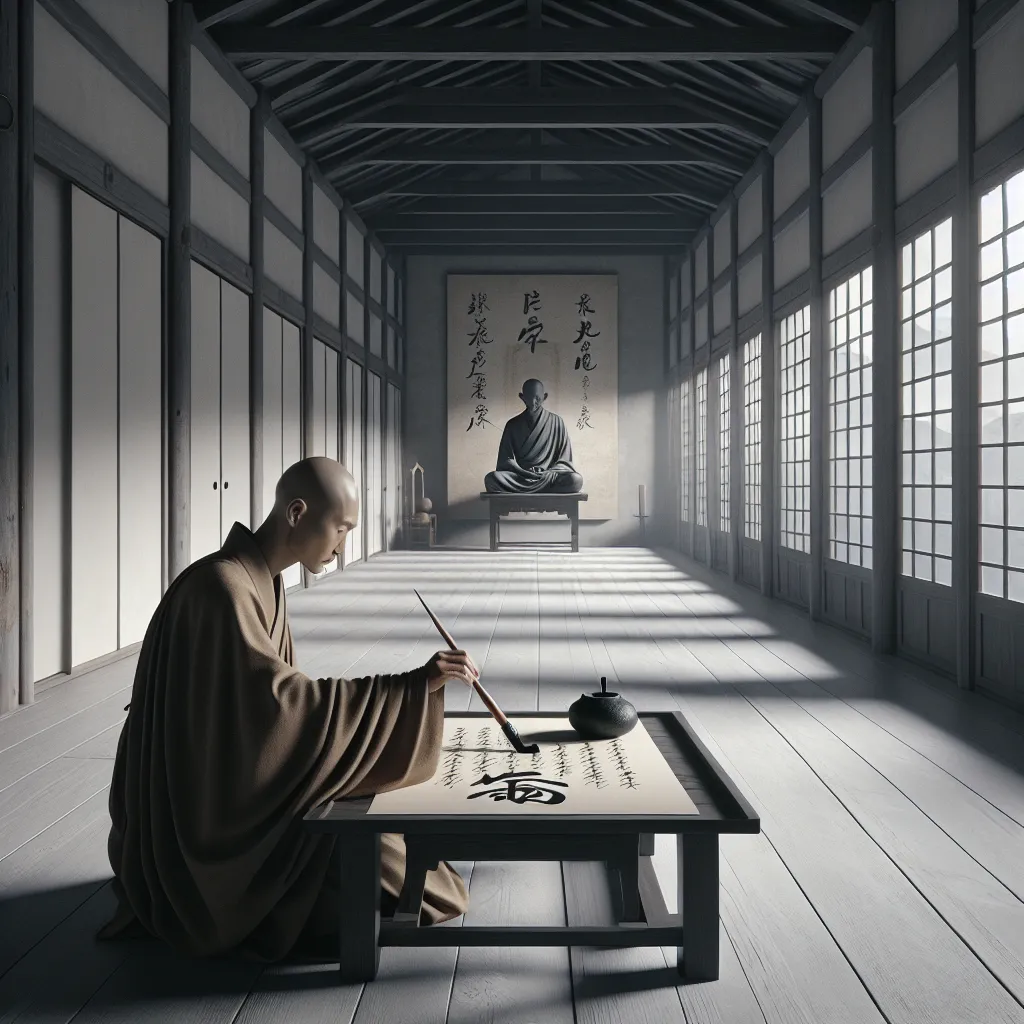
- Published on
- Authors

- Name
- You
The Zen of Calligraphy: Meditation Through Art
Introduction
Shodo, or Japanese calligraphy, is an art form that transcends mere aesthetics. Rooted deeply in Zen Buddhism, it stands as a harmonious blend of meditative practice and artistry, reflecting the practitioner's inner state and spiritual journey. In this article, we explore the history, techniques, and spiritual essence of Shodo, uncovering its unique role as a meditative practice.
Historical Context
Origins and Evolution
Shodo originated in China before making its way to Japan around the 6th to 7th centuries. It evolved significantly with the advent of Zen Buddhism in the 12th century, becoming a profound expression of spiritual practice. The monk Kukai, also known as Kobo Daishi, is frequently cited as a pivotal figure in the development of Japanese calligraphy.
| Period | Key Figure | Contribution |
|---|---|---|
| 6th Century | Wang Xizhi | Foundation of calligraphy techniques |
| 12th Century | Kukai (Kobo Daishi) | Integration with Zen Buddhism |
| 15th Century | Sesshu Toyo | Expansion into artistic realms |
The Techniques of Shodo
Tools and Materials
The tools of Shodo are simple yet profound. They include four treasures: the brush, ink, inkstone, and paper. Each tool plays a crucial role in the process.
- Brush (Fude): Made from animal hair, the brush is essential for fluid and expressive strokes.
- Ink (Sumi): Traditionally made from soot and animal glue, it embodies both the darkness of the universe and the depth of human emotion.
- Inkstone (Suzuri): The stone where ink is ground; it symbolizes the foundation of calligraphic art.
- Paper (Washi): Handcrafted paper which absorbs ink uniquely, revealing the movement of the brush.
Brush Techniques
The practice of Shodo involves mastering several fundamental brush techniques:
- Tome (Stop): Halting brush movements cleanly.
- Hane (Leap): Creating sharp, lifted strokes.
- Harai (Sweep): Long, flowing lines that convey fluidity.
- Nuki (Withdraw): Gentle tapering of strokes.
Shodo as Meditation
The Zen Approach
In Zen Buddhism, Shodo is a meditative discipline. It requires mental clarity, focus, and inner peace. The act of writing characters in a state of mindfulness transforms it into a spiritual activity. The phrase "ichi-go ichi-e" (one time, one meeting) encapsulates the essence of Shodo – each stroke is unique and unrepeatable, reflecting the transient nature of existence.
Practicing Shodo
To practice Shodo as meditation, one follows these steps:
- Preparation: Create a serene environment, emphasizing relaxation.
- Breathing: Engage in deep, rhythmic breathing to center the mind.
- Focus: Concentrate solely on the brush and the movements of the hand.
- Execution: Write with intention and mindfulness, embracing imperfections as part of the journey.
Conclusion
Shodo transcends being merely an art form; it is an integrative practice that melds the spiritual and physical. Through its techniques and meditative approach, it offers a path to self-discovery and inner peace. By understanding and practicing Shodo, one can gain profound insights into the relationship between mind, body, and spirit.
Incorporate this beautiful practice into your life, and allow the meditative art of Shodo to transform your perspective, leading you toward greater awareness and tranquility.
Join the Conversation What are your thoughts on Shodo as a meditative practice? Have you experienced Zen calligraphy? Share your experiences and insights in the comments below!
Further Reading
- "Zen Mind, Beginner's Mind" by Shunryu Suzuki
- "The Art of Japanese Calligraphy" by Yuuko Suzuki
- "Brush Meditation: A Japanese Way to Mind & Body Harmony" by Nobuko Hirose
